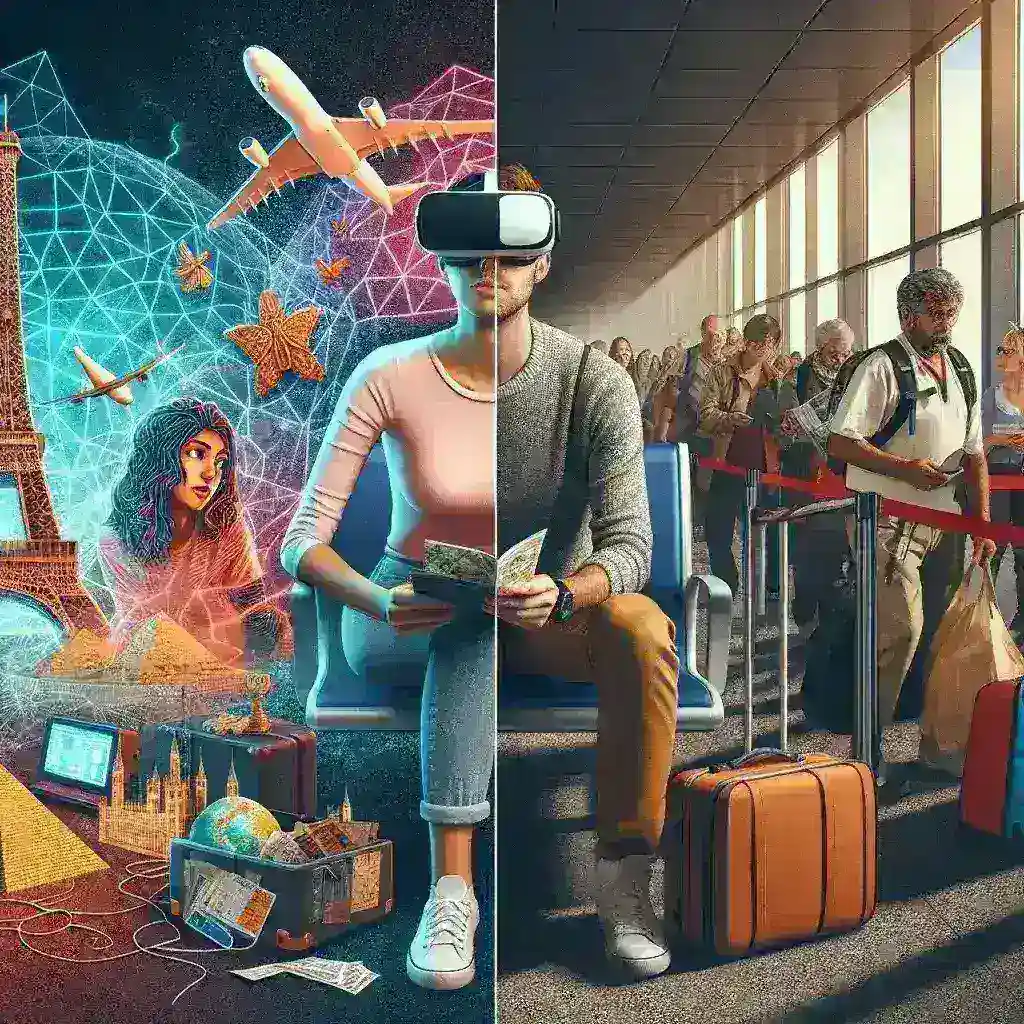Introduction
In recent years, the travel industry has faced unprecedented challenges, from global pandemics to rising environmental concerns. Among these changes, virtual tourism has emerged as a significant disruptor, offering immersive experiences that often rival traditional travel. As we delve into the impact of virtual tourism on the traditional travel industry, we will explore its evolution, benefits, and potential future implications.
The Rise of Virtual Tourism
Virtual tourism refers to the use of digital technology to simulate travel experiences, enabling users to explore destinations without leaving their homes. This innovation became particularly prominent during the COVID-19 pandemic when travel restrictions forced many to seek alternative ways to experience new places.
Historically, tourism has evolved from local excursions to grand world tours, adjusting with societal changes and technological advancements. Today, virtual tourism is another leap forward, merging technology and travel in ways previously unimaginable.
How Virtual Tourism Works
Virtual tourism leverages virtual reality (VR), augmented reality (AR), and 360-degree videos to create immersive experiences. Users can navigate famous landmarks, museums, and natural wonders through their devices. Leading platforms and tech companies have invested in making these experiences accessible and engaging, often incorporating interactive elements that enhance the ‘travel’ experience.
Benefits of Virtual Tourism
- Accessibility: Virtual tourism democratizes travel, allowing individuals with disabilities, financial constraints, or time limitations to explore the world.
- Cost-Effectiveness: Many virtual tourism experiences are available for free or at a fraction of the cost of traditional travel.
- Environmental Impact: By reducing the need for transportation, virtual tourism can potentially lessen the carbon footprint associated with travel.
- Safety: In uncertain times, virtual tourism offers a safe alternative, allowing people to explore while minimizing health risks.
Threats to the Traditional Travel Industry
While virtual tourism presents exciting opportunities, it also poses significant challenges to the traditional travel sector. The following points outline the primary threats:
1. Decreased Demand for Travel
As immersive virtual experiences become more realistic and engaging, travelers may opt for them over traditional trips. This shift could lead to a significant reduction in demand for physical travel, affecting airlines, hotels, and local economies reliant on tourism.
2. Job Losses in the Travel Sector
The decline in traditional travel could result in job losses across various sectors, including hospitality, transportation, and tour guiding. As businesses adapt to new consumer preferences, many roles may become obsolete or require re-skilling.
3. Competition for Marketing Budgets
With the rise of virtual tourism, traditional travel companies may need to compete not only with each other but also with tech companies and virtual experience providers for marketing dollars and consumer attention.
4. Changing Consumer Expectations
As travelers become accustomed to the convenience and immediacy of virtual tourism, their expectations for physical travel may also shift. Travelers may demand more personalized and exclusive experiences, impacting how traditional travel companies operate.
Pros and Cons of Virtual Tourism
To better understand the implications of virtual tourism, it is crucial to weigh its benefits against its drawbacks:
- Pros:
- Enhances global awareness and cultural appreciation without travel.
- Provides educational opportunities for schools and institutions.
- Encourages people to plan future trips by showcasing destinations.
- Cons:
- May lead to decreased economic benefits for destinations.
- Can create a lack of authentic travel experiences.
- Risk of oversaturation in the market, leading to diminished quality.
The Future of Travel: A Hybrid Model?
Experts speculate that the future of travel may not be an either/or scenario between virtual and traditional travel but rather a hybrid model that combines the two. This approach could allow travelers to experience a destination virtually before deciding to travel there physically.
Steps Toward Integration
- Collaboration: Traditional travel companies could partner with tech firms to enhance their offerings with virtual experiences.
- Innovative Marketing: Utilizing virtual tourism as a marketing tool to spark interest in real-world travel.
- Hybrid Packages: Creating travel packages that offer both virtual experiences and traditional travel options.
Conclusion
In conclusion, while virtual tourism experiences pose a threat to the traditional travel industry, they also offer unique opportunities for innovation and growth. As technology continues to evolve, the travel industry must adapt to meet changing consumer preferences. Embracing virtual tourism could enhance traditional travel experiences, creating a more integrated and accessible world of exploration.
Final Thoughts
The landscape of travel is altering, and as we move forward, it is crucial for stakeholders in the traditional travel industry to recognize the potential of virtual tourism, leveraging its benefits while navigating its challenges. The future may well be about finding balance—a harmonious blend of virtual and real-world travel experiences that cater to diverse traveler needs.

Leave a Reply